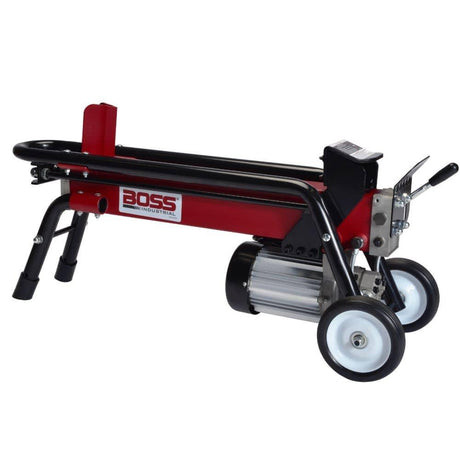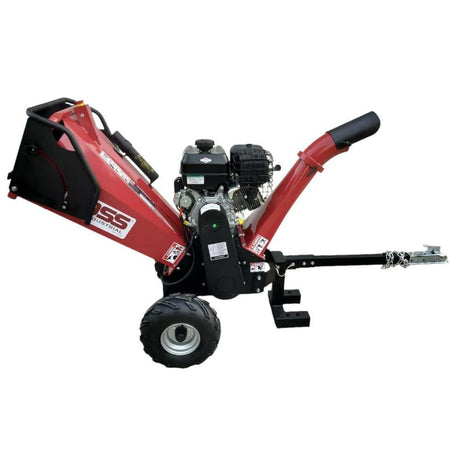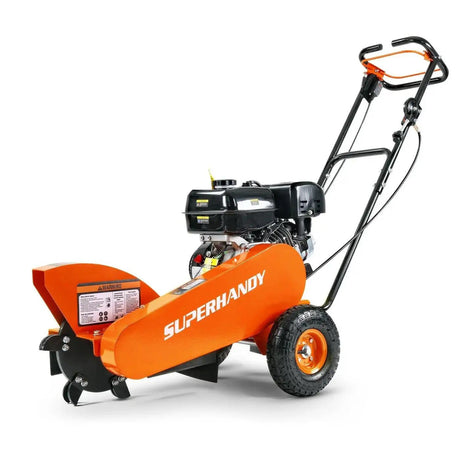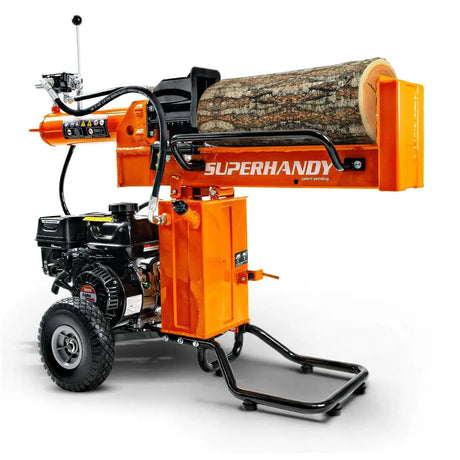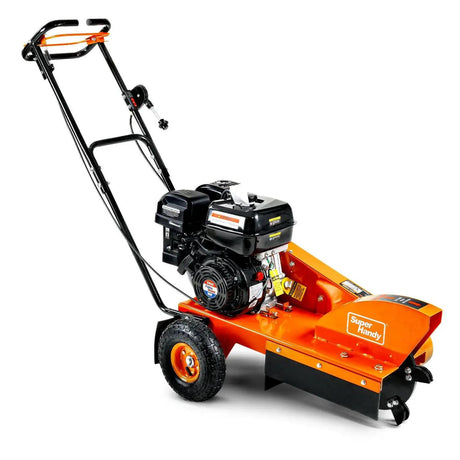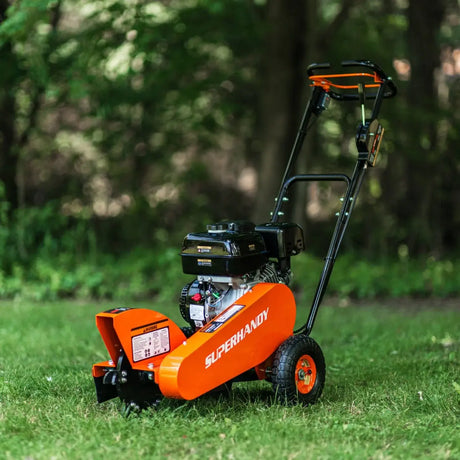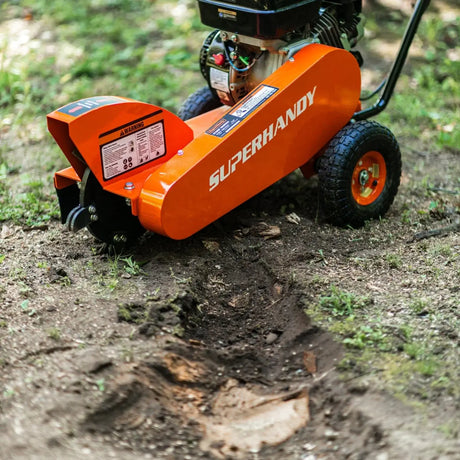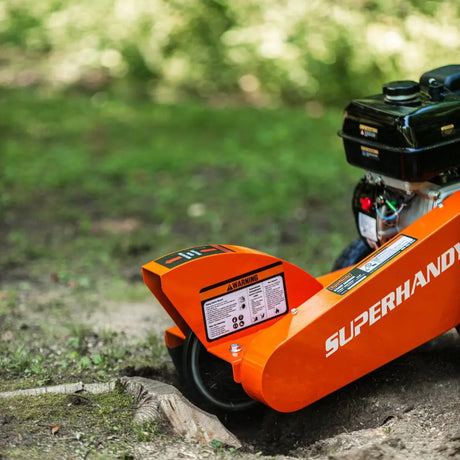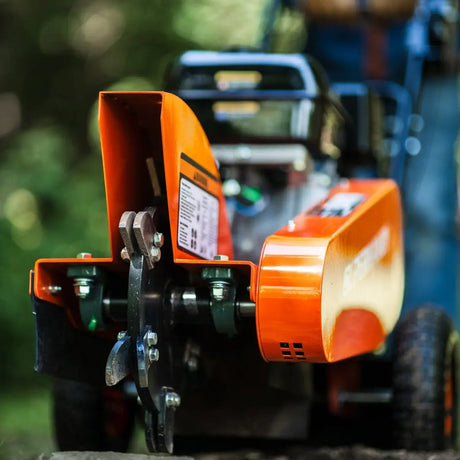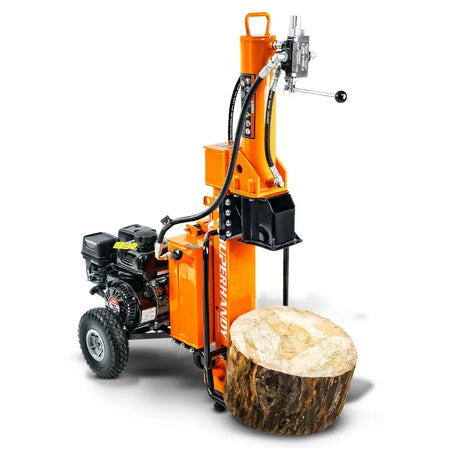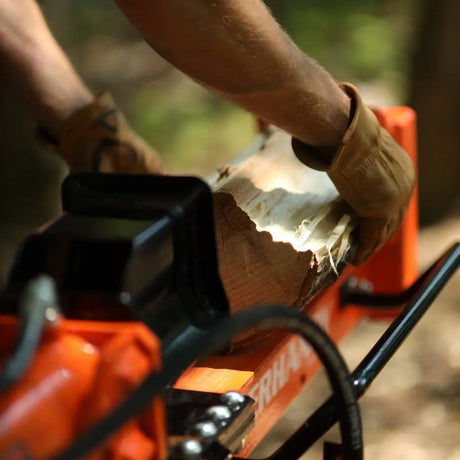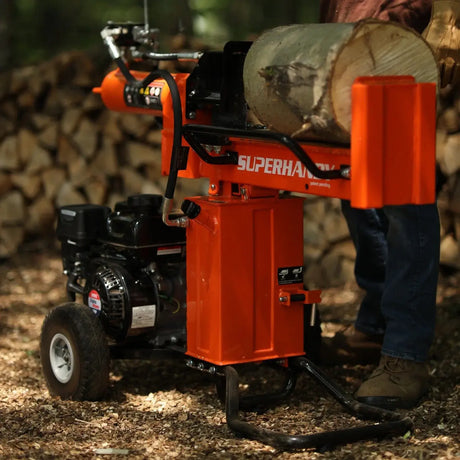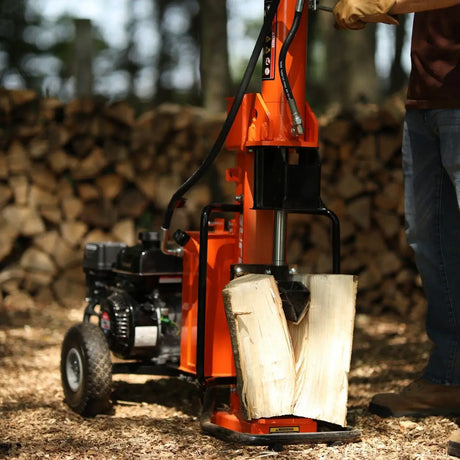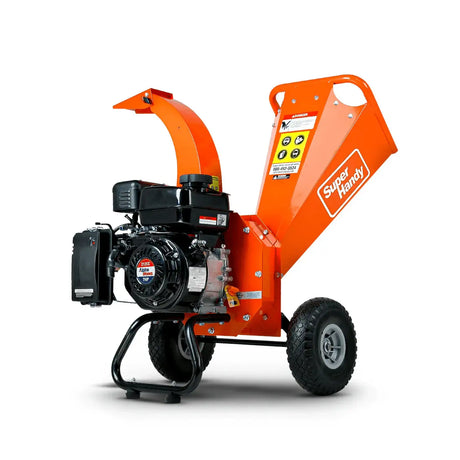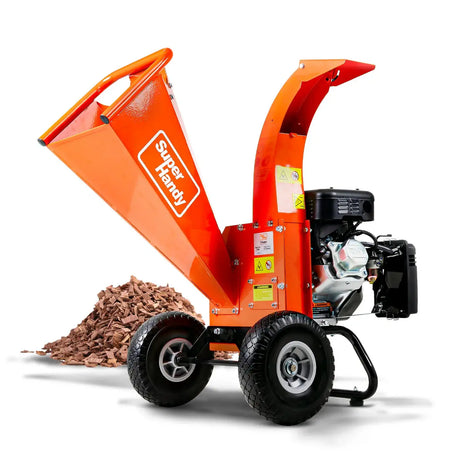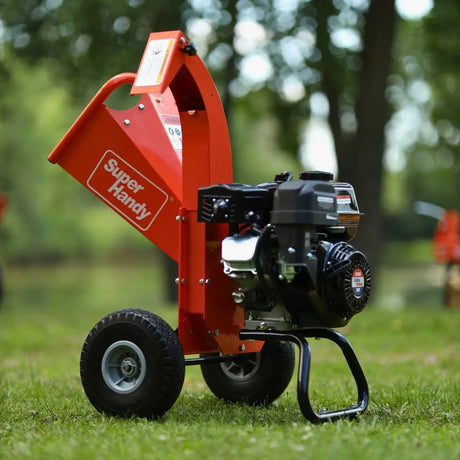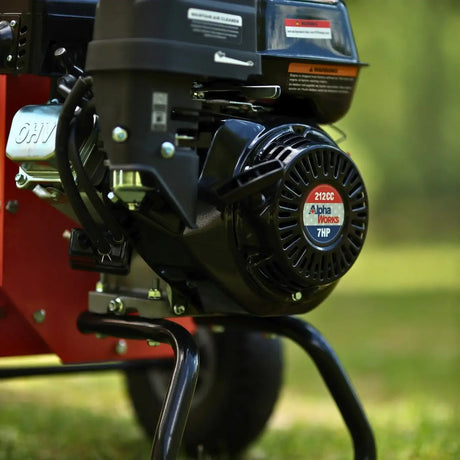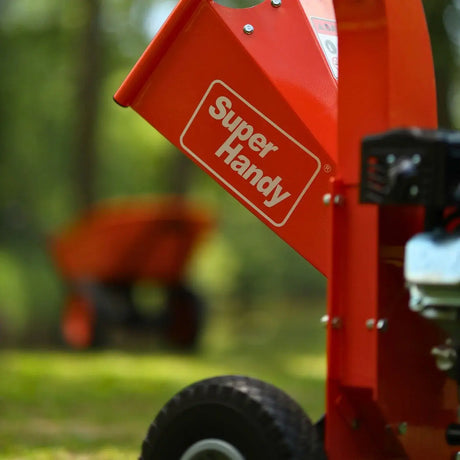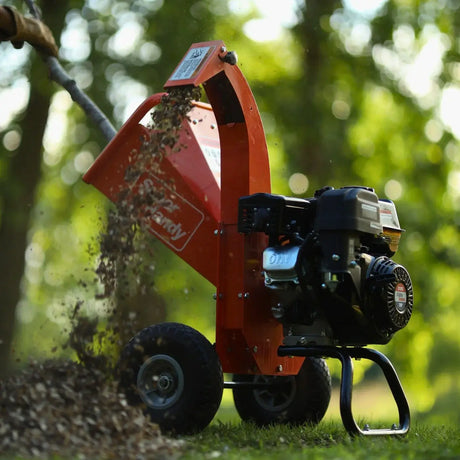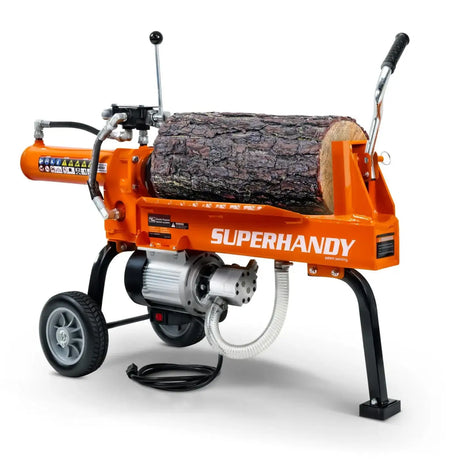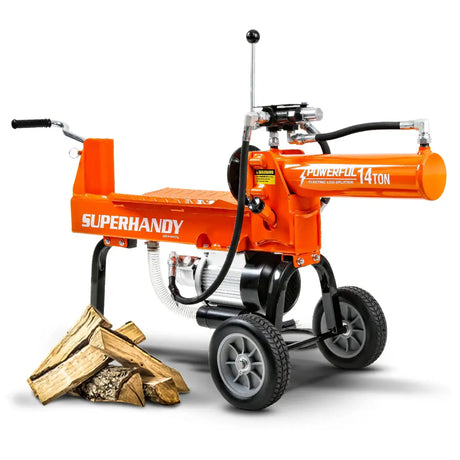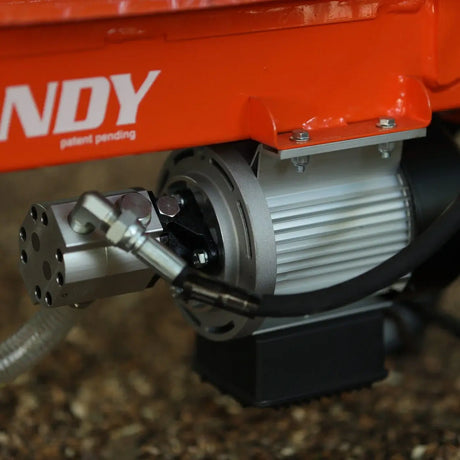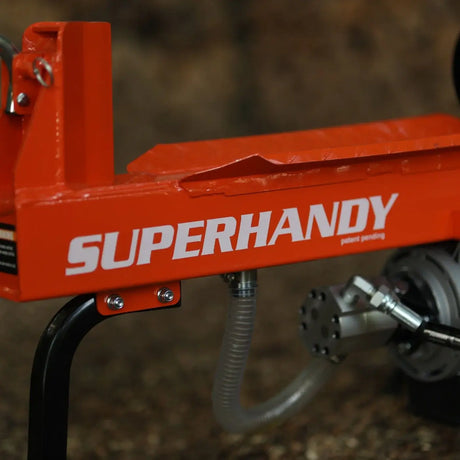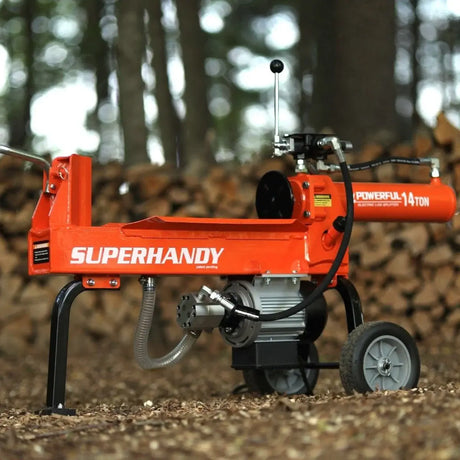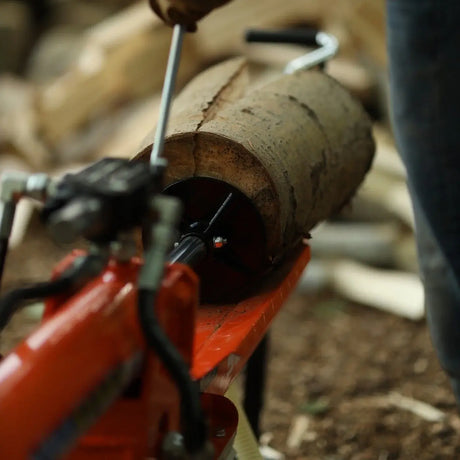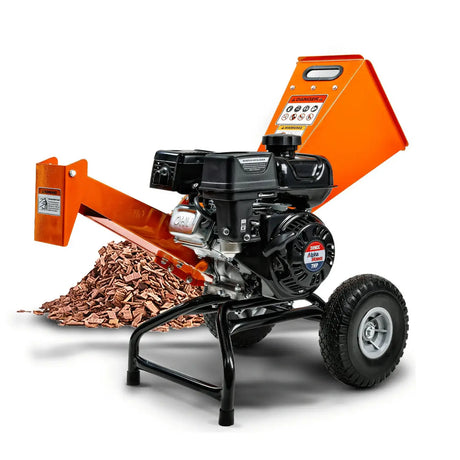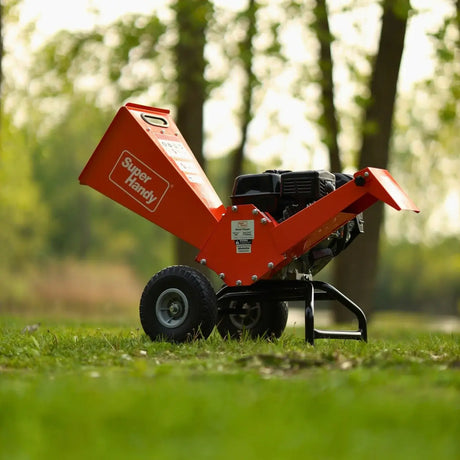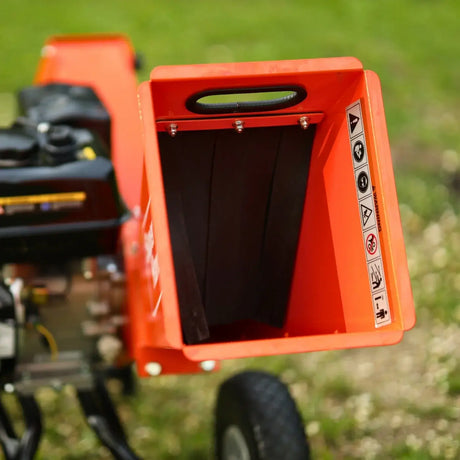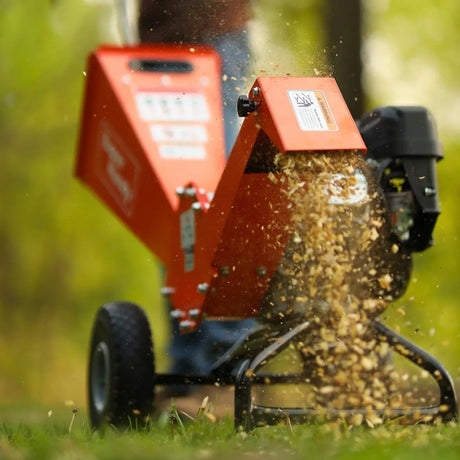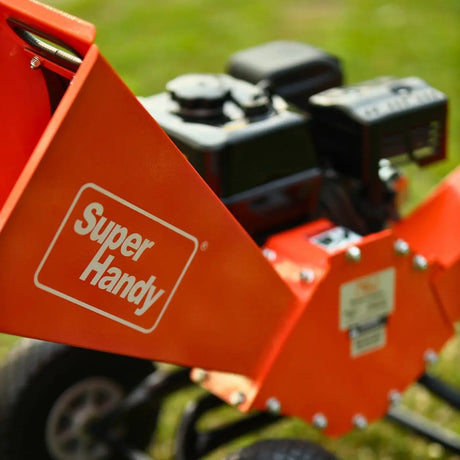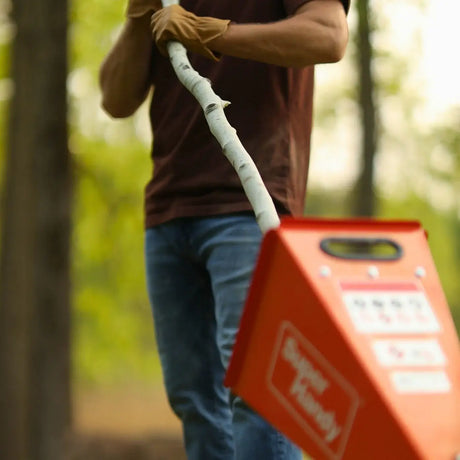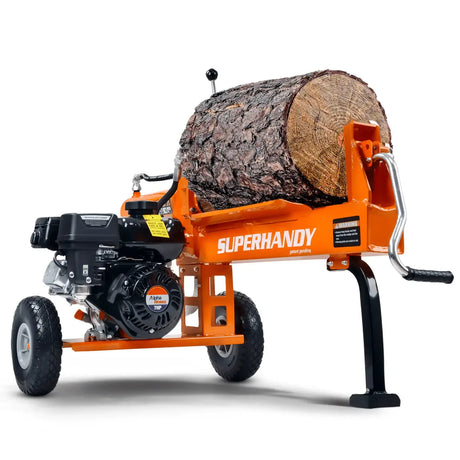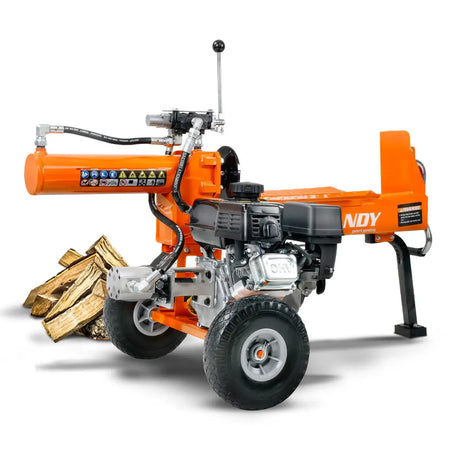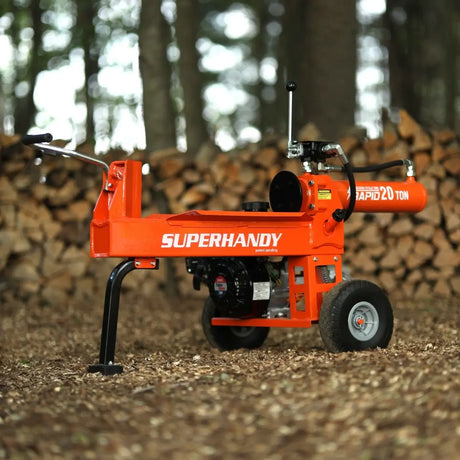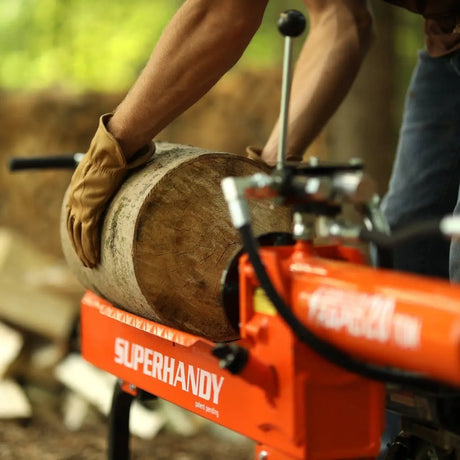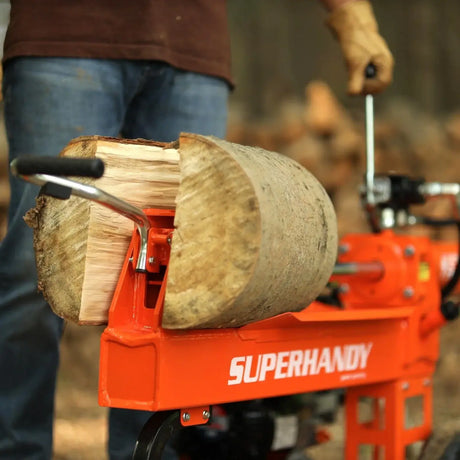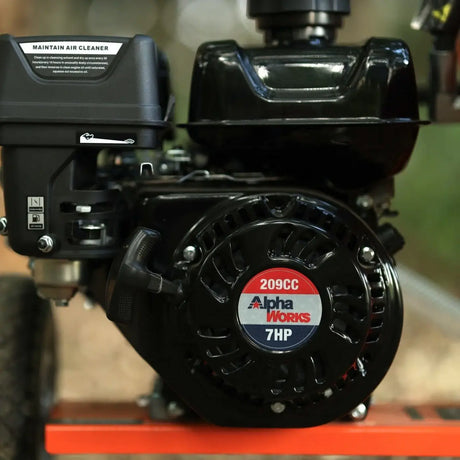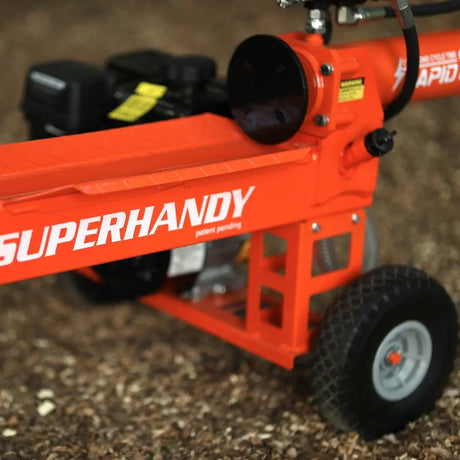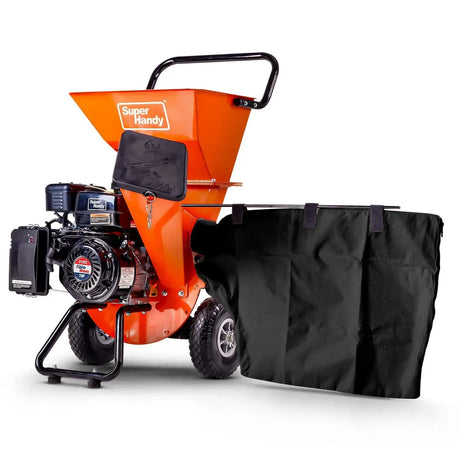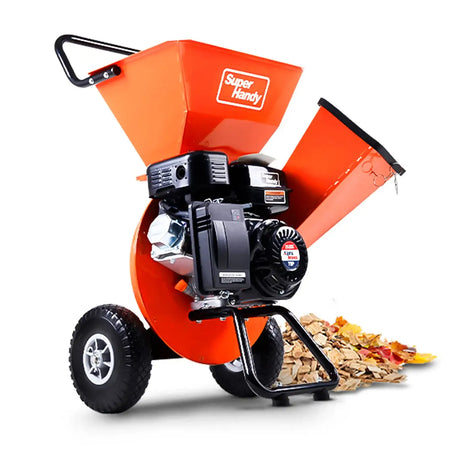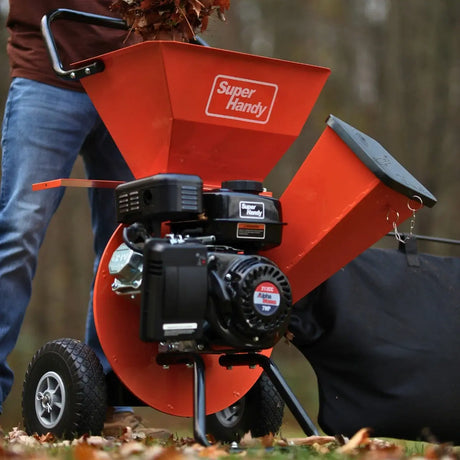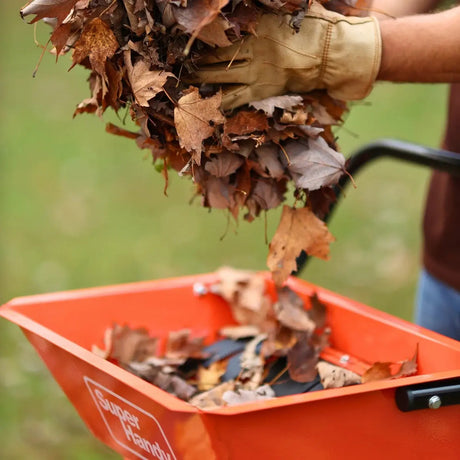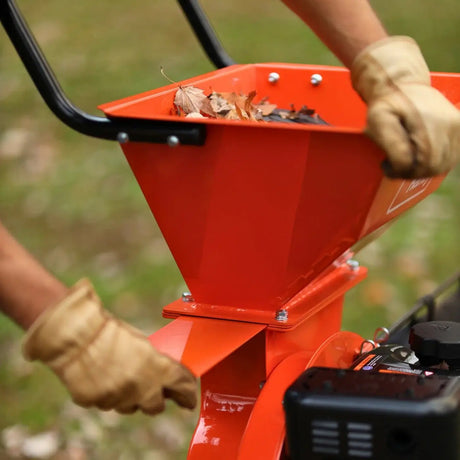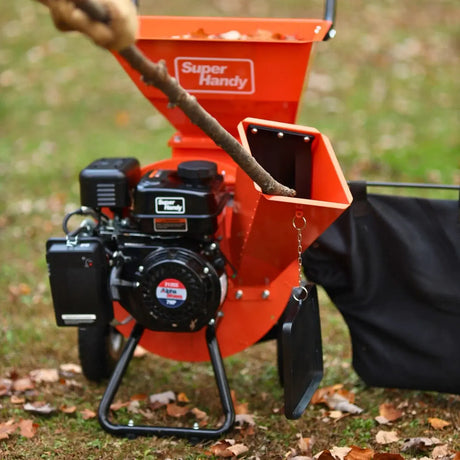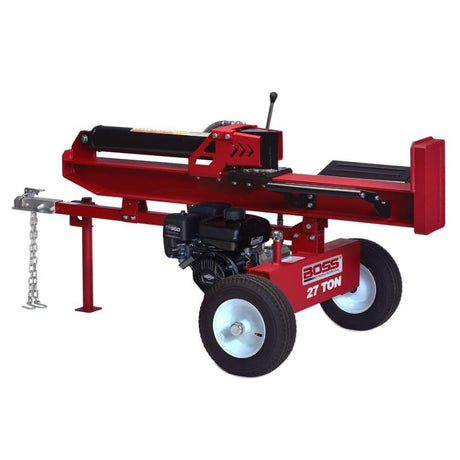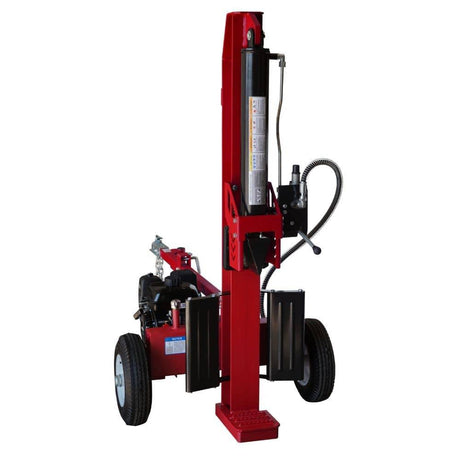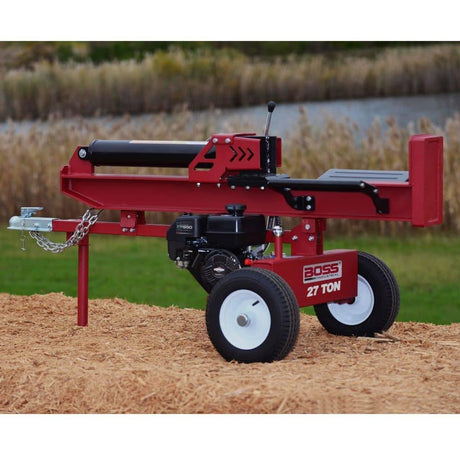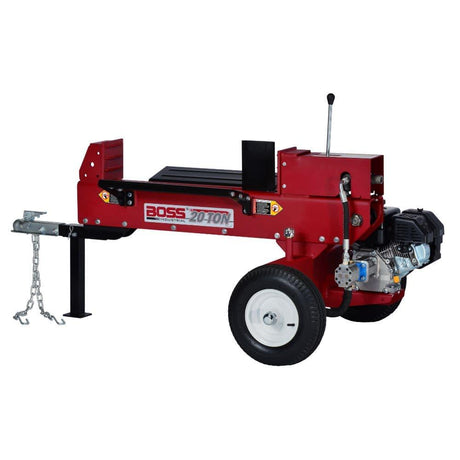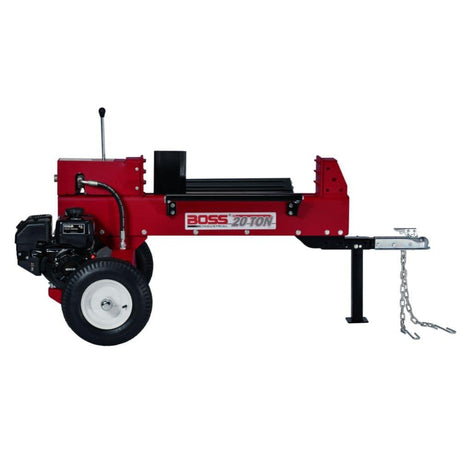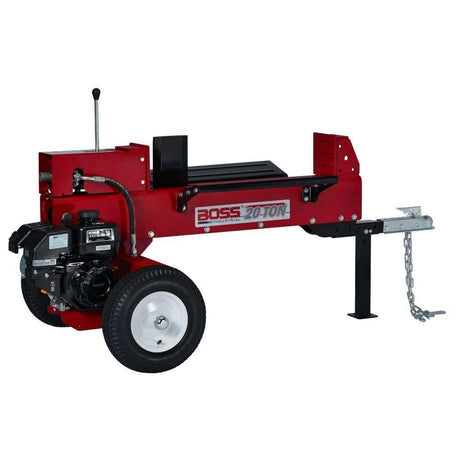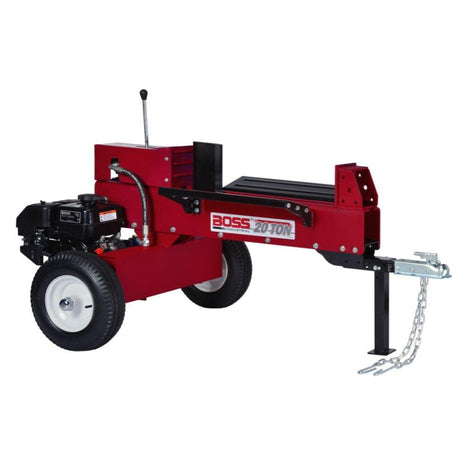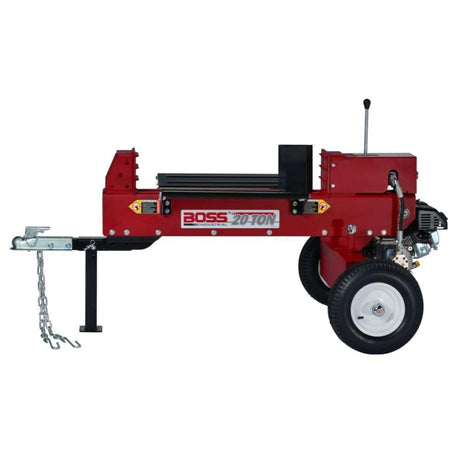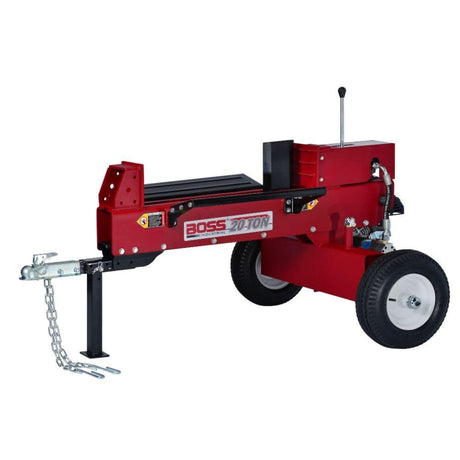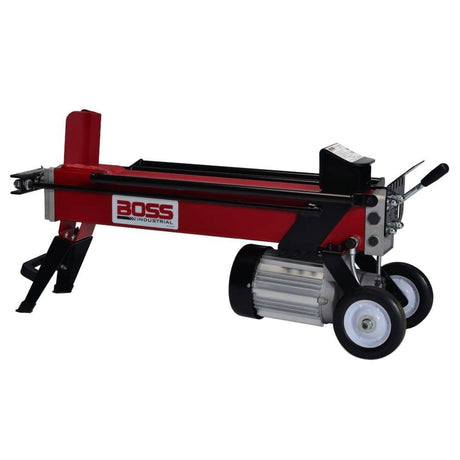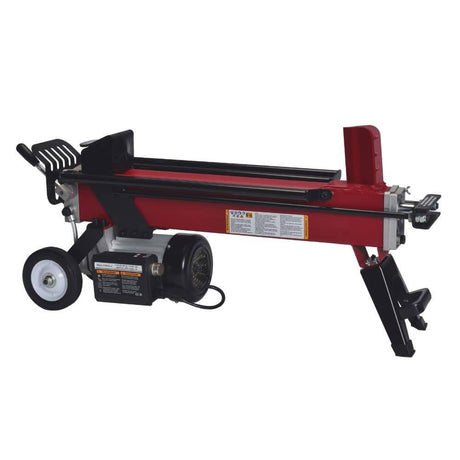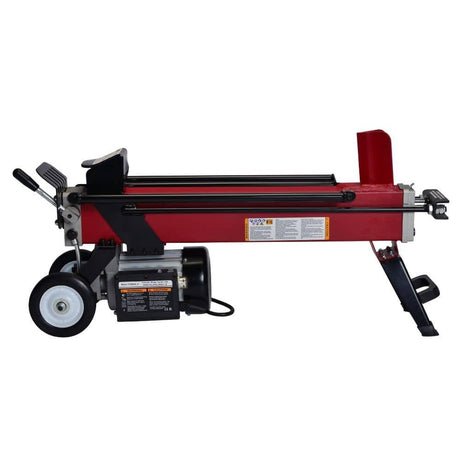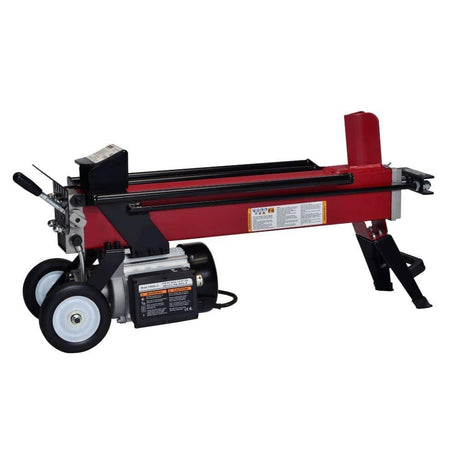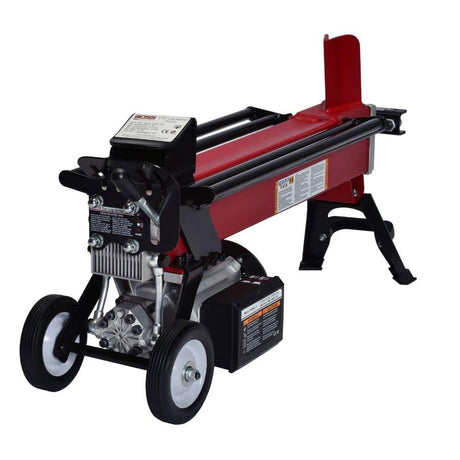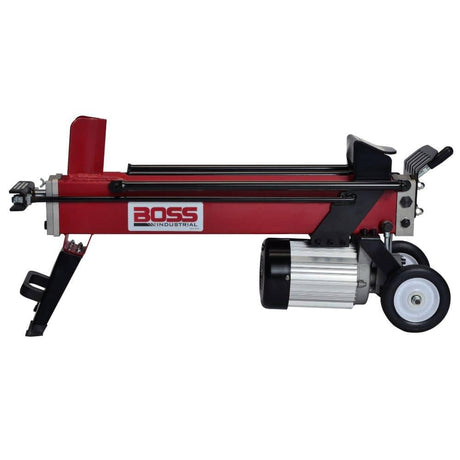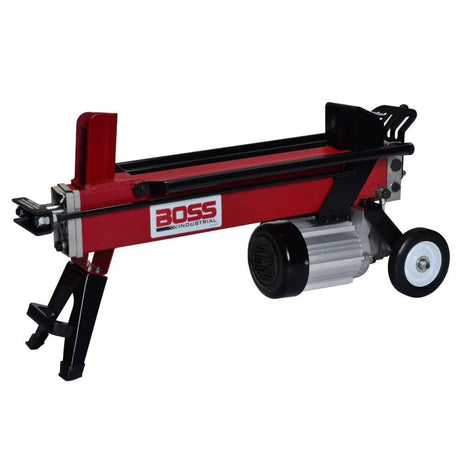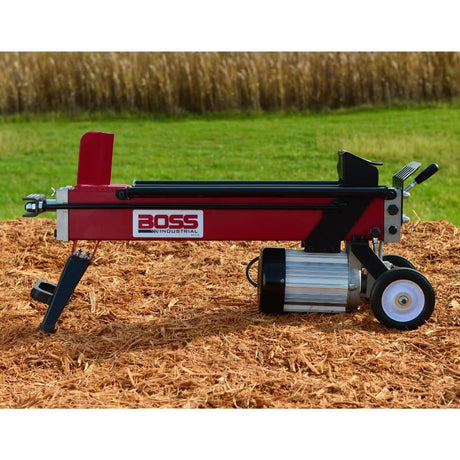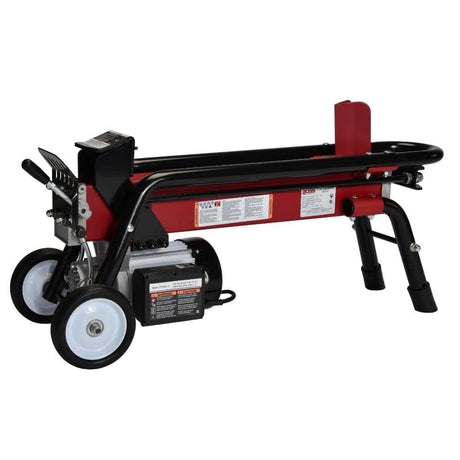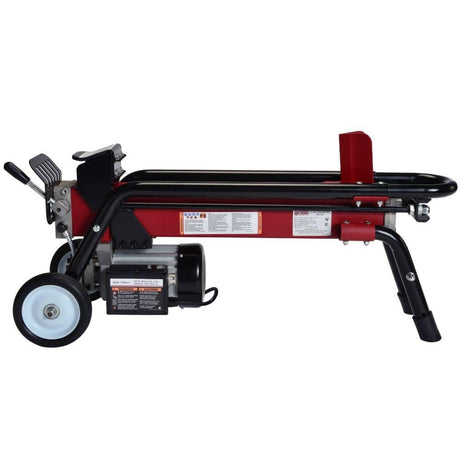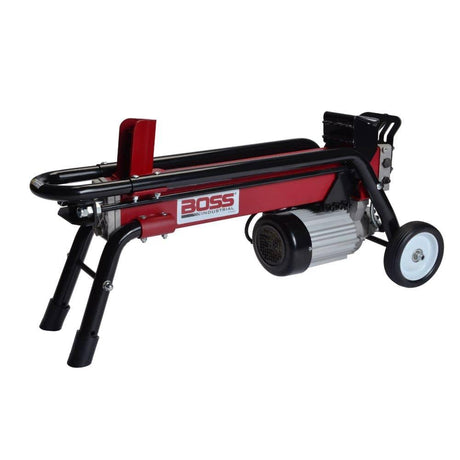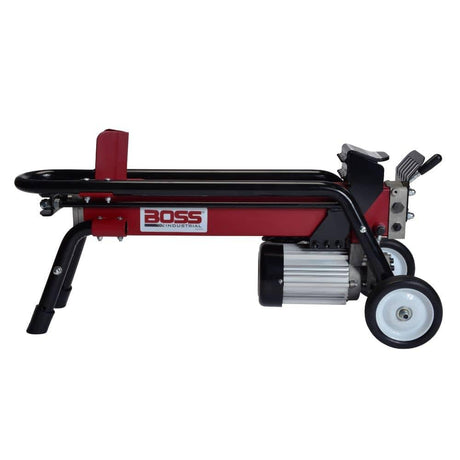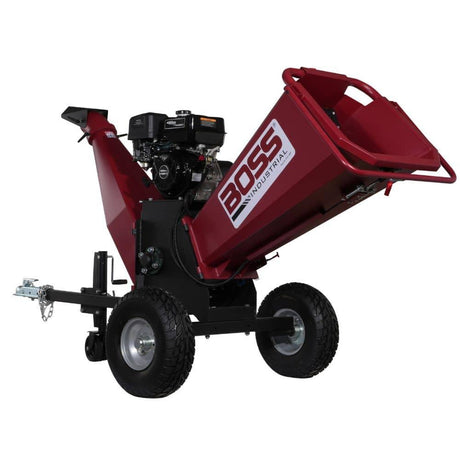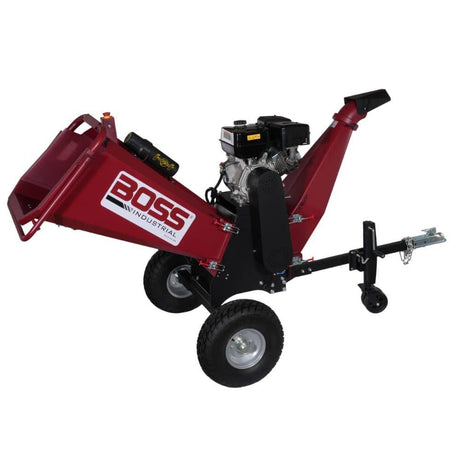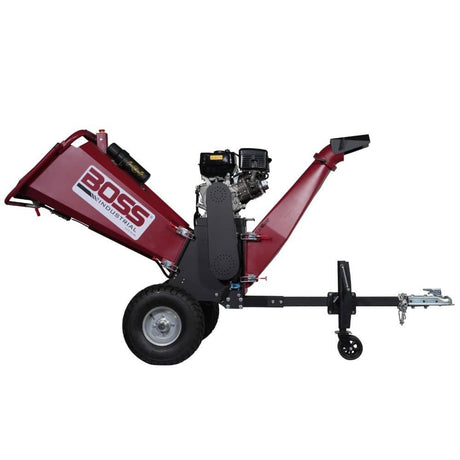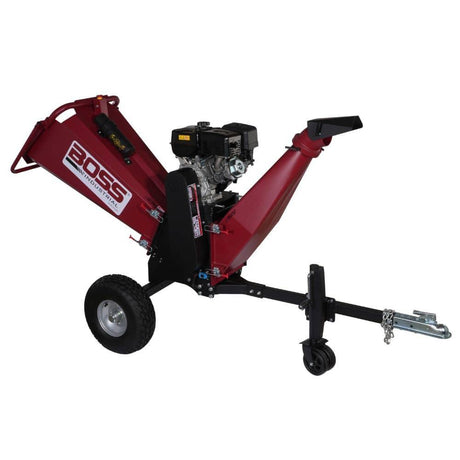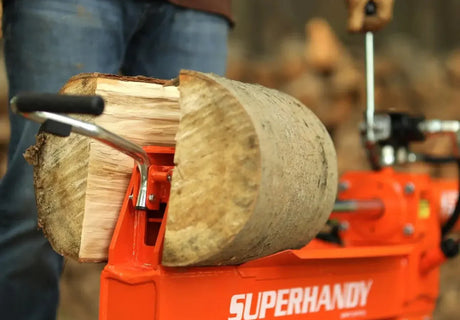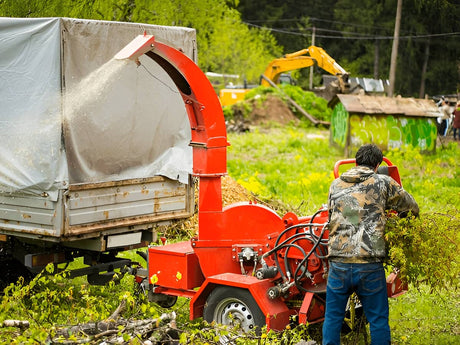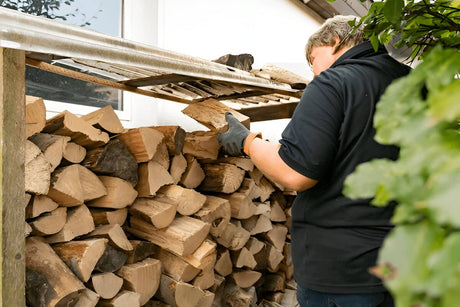A Brief History of Log Splitting
Manual Methods in the Pre-Industrial Era
Long before the first hydraulic log splitter ever hit the market, folks split logs the old-fashioned way-with pure grit and a lot of swing.
- The process started with axes and mauls-basic tools that demanded both skill and endurance. A wedge was often driven into the center of the log using a hammer or sledge to manually split logs into smaller pieces.
- Manual log splitters like hand wedges or crude bottle jack devices were the next logical step, allowing users to exert force through leverage. But these still required a strong load of physical energy.
The job was hard. It was slow. And injuries were common-especially after long hours when tired hands missed the mark. The physical strain was real. But it was the only way to get firewood ready for the burning wood stoves that kept families warm.
Early Mechanical Innovations in the 19th Century
Things started to change in the 1800s with the rise of mechanical splitters. The most notable was the Hildreth Patent Double Wood Splitter, which used a hand lever system to drive a wedge through the wood-a game-changer at the time.
- Some farms and early mills introduced water-powered saws to prep logs before splitting. These machines used a rotating blade to cut large logs down to manageable chunks before manual or lever-assisted splitting began.
- These setups reduced manual labor and allowed for faster wood processing, but they still required a person to engage the machine for every single log.
At this point, log splitting was becoming more efficient, but it hadn't yet entered the era of power.
What's interesting is how some of these early ideas-lever force, controlled wedge pressure-laid the groundwork for today's hydraulic and kinetic log splitters. They were crude, but they were the start of everything we use now to split logs faster, safer, and with far less maintenance.
The Hydraulic Breakthrough (Mid-20th Century)
How Hydraulic Log Splitters Work
When hydraulic log splitters hit the market, everything changed.
Here's what powers the system:
- Hydraulic pump: The heart of the log splitter. It creates hydraulic pressure by moving hydraulic fluid through the system.
- Hydraulic cylinder: Converts that pressure into raw force, pushing a wedge through the log.
- Control valves: Manage fluid direction-forward to split, reverse to reset.
- Reservoir: Holds and circulates hydraulic fluid during operation.
- Hoses: Carry fluid between components. Damaged hoses or hydraulic fluid leaks can cripple performance.
The beauty of this system? You can generate 10 to 30+ tons of force with a simple push of a lever. That kind of power lets you split logs that an axe couldn't touch.
Whether powered by an electric motor, a gas engine, or even a tractor PTO, a hydraulic splitter delivers consistent pressure with minimal effort. It's what made these machines the gold standard in both residential and commercial firewood processing.
Why Hydraulic Systems Changed the Game
Ask anyone who's used both an axe and a hydraulic log splitter-the difference is night and day.
1. Eliminating Manual Labor : Gone are the days of swinging steel for hours. A hydraulic splitter removes the physical strain by doing the hard part for you. Load the log, engage the control valve, and the hydraulic cylinder takes care of the rest.
2. Faster Cycle Times : Most hydraulic splitters run 10-15 second cycles. That means you can split a pile of logs in a fraction of the time it used to take. And with a two handed operation, you're in control the whole time-no surprises, no kickback.
3. Handling Bigger and Tougher Logs : Early models struggled with massive logs or tougher logs like oak and elm. But with modern hydraulic pressure, these machines can slice through almost anything. Some models even grind through stubborn logs up to 24" in diameter.
4. Broad Usability
- Electric log splitters: Ideal for DIY projects, garage use, and smaller wood loads near a power source.
- Gas powered log splitters: Built for the yard, farm, or forest. More power, more portability, but they need fuel and create exhaust.
- Tractor-mounted splitters: For homesteads and large-scale wood processing, driven by PTO.
This innovation didn't just improve the task-it redefined how firewood was prepared. From small homes to big business operations, the hydraulic log splitter became a tool everyone could benefit from.
The Rise of Modern Log Splitters
Electric vs Gas-Powered Models
The modern log splitter market gives you two core power options: electric or gas-powered. Choosing the right one depends on where you work, how often, and how much wood you plan to split.
Electric log splitters:
- Powered by an electric motor, usually 10-15 amps.
- Perfect for small jobs, garages, and residential use.
- Quiet operation and less maintenance.
- No fuel, no exhaust-great near homes or modern wood burning stoves.
- Limited power-ideal for softwoods and smaller pieces of firewood.
Gas powered log splitters:
- Driven by a gas engine, often between 160-250cc.
- Provide more power for splitting large logs or tougher logs.
- Work anywhere-no power source needed.
- Great for remote jobsites, farms, or commercial settings.
- More upkeep: oil changes, filters, and fuel management.
If you're splitting firewood for a small household, an electric splitter might be all you need. But for large loads or hardwood-heavy regions, gas models or hydraulic log splitters bring the muscle.
Kinetic Log Splitters: Speed Over Force
Here's where things get interesting.
Instead of using hydraulic pressure, kinetic log splitters rely on kinetic force. A flywheel stores energy, then releases it in a burst to split logs almost instantly.
What makes kinetic models different?
- Much faster cycle times-as low as 2-3 seconds.
- Ideal when you need to move logs fast.
- Less hydraulic fluid, no pump, and fewer hoses to maintain.
- Best suited for seasoned logs, not oversized or twisted grain wood.
When to choose kinetic over hydraulic:
- You split frequently and value speed over sheer force.
- You work with dry, straight firewood, not massive logs.
- You want less maintenance and quicker cycles for DIY projects or small business needs.
That said, hydraulic systems still outperform when it comes to tougher logs or irregular wood.
Added Safety Features and Ergonomic Design
Modern log splitters are smarter-and safer-than ever before.
Key safety upgrades:
- Two handed operation: Prevents hands from getting near the wedge during use.
- Safety glasses are still a must, but machines are now generally safer to run.
- Electric models don't produce fumes, making them safe for indoor or garage use.
Ergonomic designs to look for:
- Log cradles or side catchers: Keep split logs off the ground.
- Vertical/horizontal operation: Some machines switch modes, so you can work without lifting heavy wood.
- Wheeled frames: Whether walk behind, handlebar stump grinder-style, or full cart, portability matters-especially for larger machines.
These innovations make the operation smoother, safer, and less tiring-whether you're a weekend warrior or running a wood processing crew.
Comparing the Evolution: Then vs Now
Manual vs Hydraulic vs Kinetic: What's the Difference?
Log splitters have evolved dramatically, and each type offers unique benefits. Here's a tight side-by-side breakdown:
| Feature | Manual Log Splitters | Hydraulic Log Splitters | Kinetic Log Splitters |
|---|---|---|---|
| Power Source | Human effort | Electric motor or gas engine | Electric motor (flywheel) |
| Cycle Time | Slow, depends on user | 10–15 seconds | 2–3 seconds |
| Force Output | Limited, user-dependent | 7–30+ tons hydraulic pressure | High-speed kinetic force |
| Maintenance | Minimal | Requires fluid, pump, hoses | Fewer parts, less maintenance |
| Best For | Very small jobs, DIY projects | Medium to large jobs, tougher logs | High-volume splitting, seasoned firewood |
| Ease of Use | Physically demanding | Push-button or lever control | Lever activated, fast action |
| Cost | Lowest upfront | Mid-to-high depending on size | Mid-range with high productivity |
Summary:
- Manual log splitters are budget-friendly but hard on the body. Good for rare use.
- Hydraulic splitters balance power, force, and reliability. Ideal for mixed wood and stubborn logs.
- Kinetic log splitters deliver speed. Best for those who split often and want efficiency.
Key Milestones in Log Splitter Development
Let's look at the biggest leaps in the log splitter timeline and what each solved:
1. Axes and Mauls (Pre-industrial)
- Simple but physically demanding.
- Splitting relied on accuracy, strength, and endurance.
- Dangerous and slow, especially with massive logs.
2. Hildreth Patent Double Splitter (1800s)
- Used levers to reduce physical strain.
- Early mechanical solution to split logs faster and safer.
- Allowed one person to handle bigger wood loads.
3. Hydraulic Log Splitters (Mid-1900s)
- First machines with hydraulic components: cylinder, pump, reservoir, hydraulic fluid.
- Eliminated muscle strain.
- Enabled efficient processing of dense and larger logs.
4. Electric Log Splitters (Late 20th Century)
- Brought hydraulic power to residential users.
- Cleaner, quieter, and easier to maintain.
- Perfect for garages and suburban burning wood needs.
5. Kinetic Log Splitters (Modern Day)
- Introduced faster cycle times using kinetic energy.
- Increased productivity for small businesses and frequent users.
- Paired with electric motors for quiet, efficient operation.
Each advancement addressed a specific user challenge-whether it was speed, safety, cost effectiveness, or the ability to split tougher logs with less effort.
The Long-Term Impact of Hydraulic Technology
Commercial and Industrial Applications
Once hydraulic log splitters hit the market, they quickly became essential in commercial and industrial settings. Why? Because manual log splitters just couldn't keep up with the demands of large-scale wood processing.
Industries that rely on hydraulic splitters:
- Tree services: Need to split logs fast and on-site after removals. Portability and hydraulic force make it possible.
- Forestry operations: Use hydraulic splitters powered by tractors or gas engines to manage massive logs in remote areas.
- Firewood businesses: Need reliable machines to split consistently all day-especially for modern wood burning stoves and bulk buyers.
- Biomass and recycling plants: Prep wood for burning, grinding, or energy production. Volume and speed matter.
Why hydraulic dominates here:
- Delivers more power through hydraulic pressure (20-30+ tons).
- Handles tougher logs, odd shapes, and knots.
- Compatible with log lifts, wedge attachments, and multi-way splitting tools for faster processing.
For any business, the cost effectiveness of a reliable hydraulic splitter pays off over the long haul.
Accessibility for Everyday Homeowners
What really changed the game? Smaller, electric log splitters made hydraulic tech accessible to regular folks.
What that means for homeowners:
- Compact electric models (5-10 tons) now handle small jobs with ease.
- Plug-and-play operation-just connect to a standard outlet.
- Quiet, clean, and safe for use near homes or garages.
- Great for prepping firewood for backyard pits or burning wood indoors.
Typical features on residential units:
- Built-in wheels for transport.
- Horizontal setup with low load height.
- Built-in control valves for simple operation.
- Use hydraulic cylinders, just like the big ones, but scaled down.
What to expect:
- Prices range from $300 to $1,500.
- Light-duty hydraulic components, but plenty of power for softwood and smaller pieces.
- Less maintenance than gas, and no fumes indoors.
Whether you're splitting for a camping trip or prepping for winter, the right splitter-even a small hydraulic log splitter-saves time, effort, and your back.
Conclusion: How Far We've Come (And What's Next)
Recap: From Muscle to Machine
It's been a big leap from swinging an axe to pushing a button. Here's the evolution in a nutshell:
- Manual log splitters relied on raw physical strain. Great workout, but not efficient.
- Hydraulic log splitters changed everything-turning brute strength into hydraulic pressure that powers through stubborn logs with precision.
- Kinetic log splitters introduced speed, with flywheels delivering faster cycle times and minimal wait between splits.
Whether you're a homeowner splitting for your modern wood burning stove or a tree service tackling massive logs, there's now a splitter that matches your exact needs.
Today's machines are:
- More powerful
- Safer with two-hand controls and built-in safety features
- Cleaner, especially electric splitters
- Easier to maintain, especially for DIY projects
And the tech keeps improving-smarter controls, better ergonomics, and even hydraulic or kinetic force hybrid models on the horizon.
What Buyers Should Know Today
Before you purchase a log splitter, take a step back and assess your needs:
1. Know your volume: Are you splitting a cord a year, or every week for a small business?
2. Understand your wood: Dense hardwood like oak needs more power-look for higher-tonnage hydraulic splitters or gas powered log splitters.
3. Measure your logs: If you're dealing with large logs, size matters. Pay attention to cylinder, pump, and wedge specs.
4. Pick the right power source:
- Electric splitters = Quiet, clean, great for small jobs
- Gas models = More power, better for remote use or commercial jobs
5. Budget for durability: A good hydraulic splitter is an investment. Choose solid hydraulic components, reliable electric motors, and easy-to-service hoses, fluid, and control valves.
Final tip? Don't just buy for now-buy for the long run. The right splitter will save you time, money, and a whole lot of effort, year after year.

